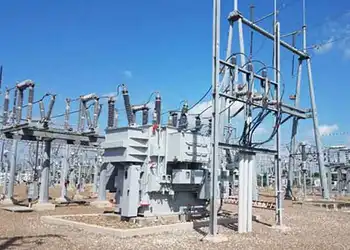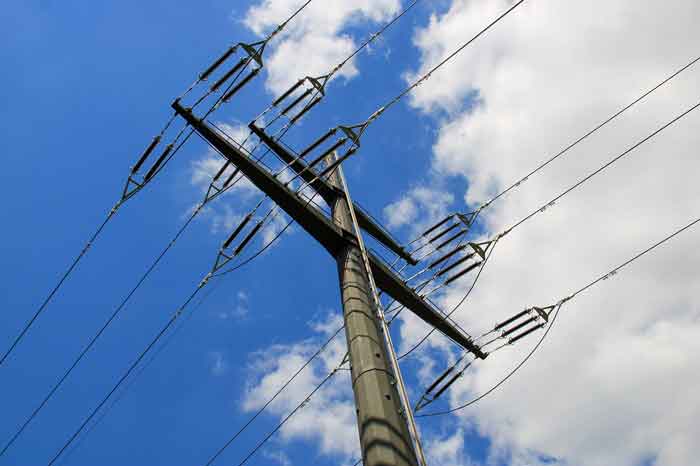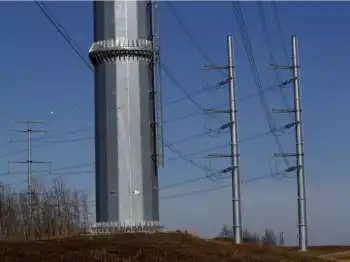OPG rapped for reactor breach
PICKERING, ONTARIO - A hole in a radiation containment system at Pickering generating station has not been fixed more than a month after detection, sparking concern Ontario Power Generation is dragging its feet on safety and keeping important information hidden from the public.
Both OPG and the country's nuclear watchdog, the Canadian Nuclear Safety Commission, have confirmed the existence of the breach but say that, based on a visual inspection conducted in mid-June, the hole is not big enough to worry about radiation release and that it will be plugged.
The breach was found on a huge concrete duct system that connects all eight Pickering reactors to a 71-metre-tall concrete vacuum building, which sucks up and safely contains any radiation leaks that may occur during an accident.
"OPG will be fixing this," said Tom Schaubel, a director with the Canadian Nuclear Safety Commission who oversees safety compliance at Pickering. "We will be following up on this."
OPG spokesperson John Earl said an investigation is ongoing. "It's not something that is degrading the effectiveness of the safety system."
But some nuclear experts say OPG isn't taking the issue seriously enough and is simply taking too long to act. They argue that what can appear as a small leak can quickly turn into a larger problem when the system is put under high-pressure strains, such as during an accident that requires fast containment of large amounts of radiation.
The recent earthquake in Japan, for example, caused radiation leaks, burst pipes and fires at the world's largest nuclear plant, which has since been shut down. The operator of the plant has been accused of covering up past safety problems or being too slow to disclose accidents.
Nuclear safety expert David Mosey, a 30-year veteran of Canada's nuclear industry and author of the book Reactor Accidents, said OPG should know better.
"Something like this should be acted on very promptly," said Mosey.
"This doesn't give me a warm, fuzzy feeling. It may be a small leak, indeed, but do they know how big it is? And do they know what effect it would have on repressurization time after an accident? If they have no idea they should be finding out."
The Star became aware of the problem after an individual claiming to be a "concerned employee" of OPG mailed an anonymous letter complaining that a "hole" in part of the station's radiation containment system was allowing rain to leak in.
The letter also contained a copy of an official "station condition record," dated June 10, which internal staff are free to fill out to raise potential problems to management. That record describes a "puddle of water" found in a concrete duct system – called a pressure relief duct, or PRD – resulting from a leaky hinge joint at Pickering B reactor unit 5.
The record also indicates the area was inspected on June 19 and the "Safety System Function" was not impaired.
Pickering station is Ontario's oldest nuclear power plant. Pickering A consists of reactor units 1 to 4, but two have been mothballed. The other two, both refurbished in recent years at a cost of $2 billion, are down for maintenance until late summer. All units are based on Canadian-designed CANDU technology.
Pickering B consists of reactor units 5 to 8. Unit 5 was recently down for unscheduled repair and is expected to go offline again later this week. OPG is currently studying whether it should go ahead and refurbish Pickering B reactors, or build new reactors at Darlington generating station.
The pressure relief ducts have had past problems with leaks, including a 1990 inspection that found several seals in the structure had failed well before their design life.
"It's a legitimate concern," said Tom Adams, an analyst with Energy Probe. "It's one of four special safety systems. One of the most basic principles of reactor operations is that you cannot operate those reactors if one of those special safety systems is impaired, and leaking is clearly impairment."
Frank Greening, a former senior nuclear scientist with OPG, said he's struck that an employee of the provincially owned power generator would be so concerned as to raise the issue outside the company.
"What amazes me is he's pinpointed a specific problem, and has obviously made waves about it internally," said Greening. "There is something weird; something not right here."
Greening said the culture of OPG tends to discourage the act of whistle-blowing. "OPG says we're open and we listen to our employees, but if you feel you're not being heard and go outside, you will pay the price for that.
"It's too bad the nuclear industry has become so closed and secretive."
Fixing a problem with the containment system can be tricky. As a shared system, typically all reactors connected to it must be shut down to perform repair. In September 2004, Bruce Power was forced to shut down its 3,360-megawatt Bruce B power station for a month to inspect its vacuum building.
Doing such a fix on Pickering, in the middle of the summer when electricity demand is at its highest, could leave the province in a severe power crunch and the Liberal government vulnerable to critics.
"If you're counting on 2,000 megawatts out of Pickering and you don't have it, what are you going to do? It would be a major blow," said Mosey.
Greening is more skeptical. "There's an election coming up, and Dalton McGuinty seems to be pushing nuclear in a clever way by bad-mouthing coal. There's a hell of a lot resting on the performance of CANDU reactors right now."
Earl said the whole containment system is under negative pressure, meaning air or water that travels through a small breach will move inside but can't escape. "We would never operate those plants if we thought there was a safety concern to employees or the public."
But some have their doubts. Greenpeace raised concerns in January that Pickering is closer than any other reactors in the world to a major city – just 30 kilometres away from downtown Toronto. If Pickering were proposed today regulators would never approve it, the environmental group has argued.
Shawn-Patrick Stensil, an energy analyst at Greenpeace, said it's difficult these days to find out what safety issues OPG and Bruce Power are reporting to the regulator.
"How do we know the watchdog is actually doing its job? We have to hold them at their word, and that's not necessarily reassuring."
Related News

Peterborough Distribution sold to Hydro One for $105 million.
PETERBOROUGH - The City of Peterborough said Wednesday it has agreed to sell Peterborough Distribution Inc. to Hydro One for $105 million.
The deal requires the approval of the Ontario Energy Board.
According to the city, the deal includes a one per cent distribution rate reduction and a five-year freeze in distribution rates for customers, plus:
- A second five-year period with distribution rate increases limited to inflation and an earnings sharing mechanism to offset rates in year 11 and onward
- Protections for PDI employees with employees receiving employment offers to move to Hydro One
- A sale price of $105 million
- An agreement to develop a regional…




